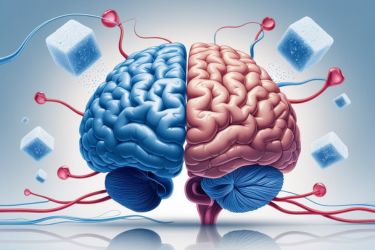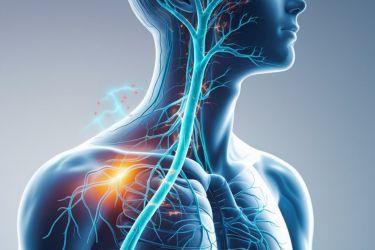The connection between neuroscience and addiction is a complex and critical area of study. Understanding how addiction alters brain function can help us develop better treatments and support for those affected. By exploring the neurobiology behind substance use disorders, we gain valuable insights into why certain individuals may become dependent on drugs or alcohol while others do not.

Our brains are not just passive observers; they actively change in response to substances, leading to physical and psychological challenges. This information sheds light on the genetic and environmental factors that play a role in addiction, influencing our behaviour and decision-making. Recognising these influences is essential for designing effective interventions.
As we delve into this topic, we invite you to join us on this journey through the intricate workings of the brain and the impact of addiction on our lives. With knowledge comes power, and by understanding these issues, we can better address and manage addiction in our communities.
Key Takeaways
- Neuroscience reveals how addiction changes brain behaviour and chemistry.
- Genetic and environmental factors significantly influence addiction risk.
- Understanding addiction is key to improving treatment and management strategies.
The Neuroscience of Addiction

Addiction impacts both the brain and behaviour, involving complex neurobiological mechanisms. We can gain insights into addictive behaviours by exploring how these processes work, particularly through the role of the dopamine system and key brain regions.
Defining Addiction and Its Impact
Addiction is a chronic brain disease characterised by compulsive substance use despite harmful consequences. It alters our brain's structure and function, especially in the central nervous system. This leads to changes in how we experience pleasure and decision-making.
The impact of addiction can be profound, affecting personal relationships, work, and overall health. It often leads to cycles of use, withdrawal, and relapse. Understanding addiction helps us address these issues and develop strategies for prevention and treatment.
Neural Substrates of Addictive Behaviour
Several neural substrates contribute to addictive behaviour. The nucleus accumbens is a central player in the reward circuit. This area processes pleasure and reinforcement, making it critical in addiction.
Other regions also play significant roles, including the prefrontal cortex, which is responsible for decision-making and self-regulation. Disruptions in these areas can enhance impulsive actions and diminish our ability to resist cravings. By examining these neural substrates, we can better understand how addiction manifests.
Role of the Dopamine System
The dopamine system is crucial in the development of addiction. Drugs and alcohol can hijack this system, leading to increased dopamine release in the nucleus accumbens. This surge creates feelings of euphoria and reinforces the behaviour of seeking out the substance.
The mesolimbic dopamine system connects several brain areas, enhancing its role in our reward responses. Chronic exposure to addictive substances can impair dopamine activity, altering our brain's natural reward circuitry. This understanding is essential in addressing the challenges faced in addiction treatment and recovery.
Substance-Induced Changes in the Brain

Psychoactive substances can lead to significant changes within our brains. Understanding these changes helps us grasp how addiction develops and why it can be so challenging to overcome. We will explore the primary mechanisms of neuroadaptation, insights from neuropharmacological studies, and the imaging techniques that allow us to study these effects in real time.
Neuroadaptation and Drug Dependence
When we use drugs repeatedly, our brain undergoes neuroadaptation. This means our neurons adjust to the presence of a drug. Over time, they may become less sensitive to its effects. For example, when we consume alcohol, our brain might reduce the number of receptors available for it.
This adaptation plays a major role in drug dependence. As our brain changes, it can lead to cravings and compulsive drug-seeking behaviour. Chronic use alters reward pathways, making it harder for us to experience pleasure without the substance. This shift can create a cycle of dependency that is difficult to escape.
Neuropharmacological Studies
Neuropharmacological studies provide valuable insights into how drugs affect our brain's chemistry. By observing how different substances interact with neurotransmitters, we can identify specific changes that lead to addiction. For instance, drugs such as cocaine significantly increase dopamine levels, creating intense pleasure.
These studies also highlight the importance of pharmacology in therapy. Understanding how drugs act on the brain helps us develop medications that can assist in recovery. We can target specific pathways disturbed by addiction, aiming to restore balance and support our efforts in overcoming dependency.
Imaging Techniques in Addiction Research
Imaging techniques play a crucial role in our understanding of addiction. Methods like functional MRI (fMRI) and PET scans allow us to observe brain activity in real time. These tools help us see how different substances change brain functions and structures.
For instance, when we use drugs, imaging can show altered blood flow in areas related to reward and decision-making. We can identify regions where changes occur, enhancing our understanding of addiction's impact. This research provides a clearer picture of addiction and offers potential pathways for developing effective interventions.
Genetic and Environmental Influences on Addiction

Addiction is shaped by both genetic and environmental factors. Understanding how these elements interact helps us grasp the complex nature of substance use disorders. We can examine how genetics predisposes individuals to addiction and how environmental influences, including trauma, play a significant role.
Genetics of Addiction
Genetics are a major factor in addiction. Research has shown that certain genes can increase the likelihood of developing substance use disorders. For instance, variations in genes related to dopamine, a brain chemical linked to pleasure and reward, can influence our risk of addiction.
Studies suggest that having a family history of addiction significantly raises the chance of developing similar issues. An estimated 40-60% of addiction risk is attributed to genetics. This means that while we all experience temptation, some of us may be more vulnerable due to our genetic makeup.
Environmental Factors and Drug Abuse
Environmental factors also contribute significantly to addiction. These include our surroundings, social networks, and life experiences. For example, growing up in a community where drug use is prevalent can normalise substance abuse, making it more likely for individuals to engage in similar behaviours.
Economic status, peer pressure, and family dynamics play critical roles in shaping our choices about drugs. We must recognise that the environment can either protect against or increase the risk of addiction. Access to education and healthcare can also influence outcomes, often serving as protective factors.
Trauma and Substance Abuse
Trauma is another critical environmental influence on addiction. Many individuals who face traumatic experiences, such as abuse or neglect, may turn to drugs as a coping mechanism. This response can lead to a cycle of addiction, where substances are used to manage emotional pain.
Studies have shown a strong link between post-traumatic stress disorder (PTSD) and substance use disorders. Trauma-informed care can help address these issues by recognising the impact of past experiences. Understanding this connection allows us to provide better support for those struggling with addiction.
By examining both genetic and environmental factors, we can develop a more comprehensive understanding of addiction and its complexities.
Psychological and Behavioural Aspects of Addiction

In addiction, psychological and behavioural factors play a crucial role in how individuals engage with substances. We will explore how craving, decision-making, and drug-seeking behaviours intertwine to shape addictive patterns.
Craving and Motivation
Craving is a powerful emotional response that drives individuals to seek out drugs. It often arises from cues in the environment, such as people, places, or even specific emotions.
This strong desire leads us to prioritise drug use over other important activities. When cravings kick in, they can dominate our thoughts and actions, affecting our motivation. We may find ourselves chasing the reward of drug use, often ignoring negative consequences.
Decision-Making and Compulsive Drug Taking
Our decision-making abilities can become severely impaired due to addiction. Substances can alter how we evaluate risks and rewards. As a result, we might take actions that seem irrational, such as risking relationships or health for immediate gratification.
Compulsive drug taking is marked by the overwhelming urge to consume the substance, despite awareness of its harmful effects. This loss of control highlights the shift in our ability to make sound decisions, further entrenching addictive behaviours.
Drug-Seeking Behaviour
Drug-seeking behaviour refers to the actions we take to obtain our substance of choice. We might engage in various strategies, such as lying, stealing, or even manipulating others.
These behaviours become increasingly focused on satisfying our cravings. Our attention shifts solely towards acquiring drugs, which can lead to significant life disruptions. The drive to seek out drugs often overshadows our ability to pursue healthy alternatives or treatment options.
Treatment and Management of Addiction
In managing addiction, we focus on a combination of medication, behavioural therapies, and ongoing research. Each approach plays a vital role in helping individuals recover, enhancing their mental health and reducing the risk of relapse.
Medication-Assisted Treatment (MAT)
Medication-Assisted Treatment (MAT) combines medications with counselling and behavioural therapies. This approach is effective for treating substance abuse disorders, especially with opioids and alcohol.
Common medications include methadone, buprenorphine, and naltrexone. These help reduce cravings, ease withdrawal symptoms, and block the effects of substances.
MAT not only tackles the physical aspects of addiction but also supports mental health. Accessing MAT can lead to better treatment adherence and improved outcomes for individuals seeking recovery.
Behavioural Therapies
Behavioural therapies are essential in addressing the psychological aspects of addiction. We employ techniques such as Cognitive Behavioural Therapy (CBT), Motivational Interviewing (MI), and Contingency Management.
CBT helps identify and change harmful thought patterns. MI encourages individuals to explore their ambivalence towards change, building motivation. Contingency Management reinforces positive behaviours, providing incentives for staying drug-free.
These therapies are often tailored to the individual's needs, enhancing their effectiveness. They equip us with skills to manage triggers, cope with stress, and improve relationships.
Clinical Trials and Research Objectives
Ongoing clinical trials are crucial for advancing our understanding of addiction treatments. These trials test new medications, therapeutic approaches, and interventions.
We focus on several research objectives, such as improving existing treatments and exploring innovative methods like digital therapy tools. Trials also assess the long-term effects of these treatments on mental health and relapse rates.
By participating in these studies, we contribute to the body of knowledge that shapes future addiction treatment. This research is vital for discovering more effective options and could lead to breakthroughs in how we manage addiction.
The Socioeconomic Impact of Addiction
Addiction has a profound effect on various aspects of society. It influences public health metrics, contributes to morbidity and mortality rates, and shapes policy related to treatment eligibility. Understanding these impacts can help us address the challenges addiction presents.
Public Health Perspectives
Addiction is a significant public health issue that affects individuals and communities alike. The Healthy People 2000 initiative aimed to reduce substance abuse, highlighting the need for focused strategies. Drug addiction often results in chronic diseases, increasing healthcare costs and straining public health resources.
Communities with high rates of addiction witness poorer health outcomes. This situation leads to greater demands on healthcare systems, impacting both access and quality of care. Public health officials must continually examine the relationship between addiction and social determinants of health to develop effective interventions.
Morbidity and Mortality Rates
The morbidity and mortality rates associated with drug addiction are alarming. Statistics reveal that individuals with substance use disorders frequently experience chronic conditions, such as heart disease and liver damage. This leads to higher hospitalisation rates and longer recovery times.
Furthermore, drug-related fatalities contribute to rising mortality figures. The opioid crisis, in particular, has led to a spike in overdose deaths. As we analyse these trends, it’s clear that urgent action is needed to combat the dire effects of addiction on mortality rates.
Policy and Eligibility Requirements
Policies surrounding addiction treatment often dictate who receives care. Eligibility requirements can vary widely, impacting access to vital drug treatment programmes. Many times, individuals need to meet specific criteria, which can leave out those at greatest need.
We must advocate for policies that expand eligibility for treatment. This includes removing barriers that prevent individuals from seeking help. Inclusive policy changes can lead to improved public health outcomes and better quality of life for those affected by addiction.
Emerging Trends and Future Directions in Neuroscience Research
As we explore the landscape of neuroscience, new trends are emerging that could transform our approach to addiction. These advancements focus on innovative therapies, animal models, and initiatives from organisations like the National Institute on Drug Abuse (NIDA).
Innovative Therapies and Treatments
We are witnessing the development of innovative therapies aimed at treating addiction more effectively. These include behavioural therapies that integrate cognitive-behavioural techniques with neuromodulation approaches. One promising area is the use of transcranial magnetic stimulation (TMS) to help reduce drug cravings.
Research shows that neuromodulation techniques can alter neural pathways linked to addiction. This not only helps with cravings but may also improve emotional regulation. Moreover, new pharmacological treatments targeting specific neurotransmitter systems, such as glutamate and dopamine, are being studied for their potential to mitigate addiction's impact.
Utilising Animal Models
Animal models play a crucial role in our understanding of addiction. Using species like rats and mice, we can mimic the biological and environmental factors that lead to drug-seeking behaviour. These models allow us to observe how different drugs of abuse affect behaviour and brain activity.
We are particularly interested in how these models can help identify genetic and epigenetic markers associated with addiction. This research can lead to better diagnostic tools and personalised treatments. By addressing the biological basis of addiction, we can develop strategies to reduce its prevalence and recurrence.
National Institute on Drug Abuse (NIDA) Initiatives
The National Institute on Drug Abuse (NIDA) is at the forefront of addiction research. NIDA supports a wide range of studies aimed at understanding the neurobiology of addiction. Their initiatives include funding grants for cutting-edge research and promoting collaborative projects across institutions.
NIDA's focus on translational research bridges the gap between laboratory findings and practical applications. By fostering partnerships between researchers and healthcare providers, NIDA is helping implement effective treatments. The organisation also prioritises education and dissemination of knowledge to improve public understanding of addiction and its neurobiological implications.
Frequently Asked Questions
In this section, we will explore key aspects of the neuroscience of addiction. Understanding these factors helps us grasp the complexities of substance dependence and the brain's role in shaping addictive behaviours.
What are the primary neurological mechanisms involved in substance dependence?
Substance dependence mainly involves the brain's reward system. Key areas include the nucleus accumbens and the ventral tegmental area (VTA). When we use drugs, these regions release dopamine, creating feelings of pleasure. Over time, repeated exposure can lead to changes in brain function and behaviour.
How do changes in brain circuitry contribute to addictive behaviours?
Addiction alters the brain's circuitry, particularly in areas that govern decision-making and impulse control. The prefrontal cortex's functioning can be impaired, making it harder for us to resist urges. This shift can drive compulsive behaviour, even in the face of negative consequences.
In what ways can an understanding of neurobiology aid in the prevention and treatment of addiction?
Knowledge of neurobiology can inform prevention strategies by highlighting risk factors. For treatment, it helps tailor therapies that target specific brain functions affected by addiction. By understanding how substances interact with the brain, we can develop better interventions to support recovery.
What are the critical stages of addiction development from a neuroscience perspective?
The stages of addiction can be broken down into three phases: binge/intoxication, withdrawal/negative affect, and preoccupation/anticipation. Each stage involves different neurobiological changes. These changes can influence behaviours and drive the addiction cycle.
How do addictive substances alter brain chemistry and function?
Addictive substances disrupt normal brain chemistry by mimicking neurotransmitters or affecting their release. For example, opioids bind to receptors that usually respond to endorphins. This can create a surge of pleasure but also leads to tolerance and withdrawal symptoms over time.
What advancements in neuroscience offer potential for new addiction therapies?
Recent advancements in neuroscience, including neuroimaging and genetic research, offer new insights into addiction. Techniques like brain stimulation and targeted medications are being explored. These innovations aim to improve treatment outcomes and support recovery efforts more effectively.





















